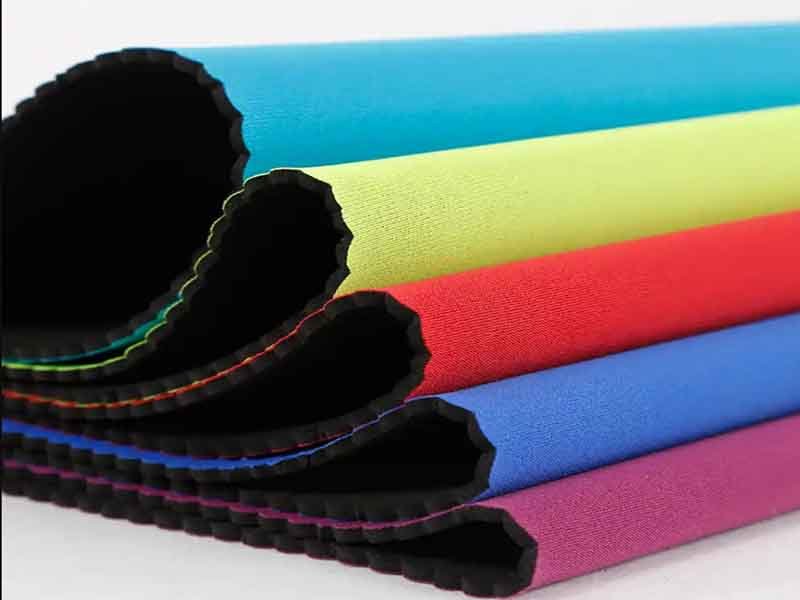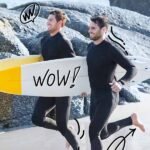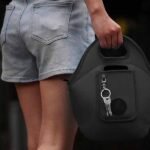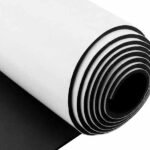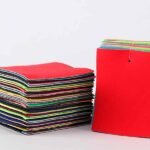Neoprene’s versatility has made it a go-to material across industries—from diving wetsuits and medical sleeves to industrial gaskets and custom neoprene bags. But not all neoprene delivers the same performance. Durability and tear resistance hinge on chemistry, thickness, reinforcement, and manufacturing controls. Choosing an ill-suited grade can lead to product failures, recalls, or costly warranty claims. Savvy product developers—from outdoor brands to equipment manufacturers—understand that upfront material selection drives long-term reliability, customer trust, and profitability.
Neoprene durability hinges on its formulation, thickness, and production quality, while tear resistance is quantified by standardized tests like ASTM D624. Premium grades with ≥75% chloroprene content, higher density, and optional fabric reinforcement deliver tear strengths of 30–55 N/mm, significantly outperforming standard grades. Match tear strength, compression set, and abrasion data to your application’s load, environmental conditions, and user-comfort requirements for best results.
Imagine launching a new neoprene cooler bag only to see the seams split under minimal stress. One emerging outdoor brand faced just that—until it partnered with a manufacturer to source a 3 mm, chlorine-rich neoprene reinforced with nylon mesh. Within months, tear failures plummeted by 85%, warranty requests disappeared, and their reputation soared. Material choice turned them from “risk” to “trusted supplier.” Let’s unpack the science, standards, and real-world data behind neoprene’s staying power, so your next custom product exceeds expectations from day one.
What Defines Durability and Tear Resistance in Neoprene?
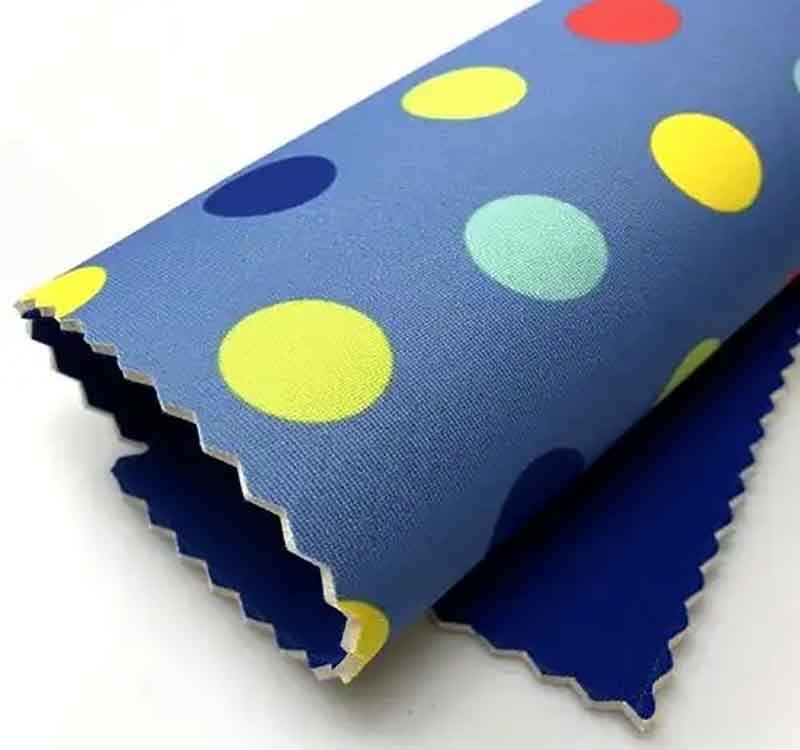
Durability in neoprene refers to its resistance to mechanical fatigue, UV, ozone, and chemical exposure over time, while tear resistance measures how well it prevents a cut from propagating under stress. Key metrics include Shore hardness, compression set, tear strength (N/mm), and abrasion loss (mg/1,000 cycles). Grades with higher cross-link density, tighter polymer networks, and quality controls show superior performance—essential for products that face repeated flexing or harsh environments.
Durability and tear resistance emerge from both molecular structure and macroscopic properties. At a chemical level, neoprene is a polymer of chloroprene monomers cross-linked during vulcanization. Chloroprene content determines cross-link density: higher percentages yield more chemical bonds per unit volume, boosting resistance to crack initiation and propagation. However, too dense a network can reduce flexibility—an undesirable trade-off in wearable applications.
Shore Hardness (A Scale) gauges resistance to indentation. Neoprene sheets typically range from 30A (soft) to 70A (firm). Harder grades resist abrasion and tear better, but feel stiffer against skin or fabric. In contrast, softer grades provide superior comfort but can abrade quickly under friction. Selecting mid-range hardness (50–60A) often balances durability and flexibility for general-purpose products.
Compression Set reflects permanent deformation after sustained compression—critical for seals and gaskets. Measured by ASTM D395, a lower compression set (<10%) means the material bounces back after load removal, maintaining tight seals. High-compression set grades lose thickness over time, leading to leaks or loss of cushioning.
Tear Strength, tested per ASTM D624 (Die C), quantifies force needed to extend an initiated tear. Higher values (30–40 N/mm for premium neoprene) indicate a robust network resisting crack growth. Standard grades may only offer 15–25 N/mm, acceptable for light-duty items like drink koozies but inadequate for high-stress covers.
Abrasion Resistance (ASTM D3884) measures material loss under a rotating abrasive. Premium neoprene can lose <50 mg per 1,000 cycles, while standard grades may exceed 100 mg. High abrasion resistance is vital for gear sliding on rough surfaces—think tool pouches or protective cases.
Beyond inherent properties, manufacturing controls—consistent temperature profiles, curing times, and batch testing—ensure uniform performance. At Szoneier, we monitor vulcanization ovens within ±2 °C and test each batch for tear strength, hardness, and compression set, achieving <5% variability. This reliability is what separates dependable products from “hit-or-miss” materials.
Finally, environmental additives like carbon black, antioxidants, and UV stabilizers extend service life outdoors. Without these, neoprene degrades under ozone and sunlight, leading to surface cracks and reduced mechanical integrity. Selecting a UV-enhanced grade can double lifespan for beach-use gear or marine applications.
Which Neoprene Grades Offer Superior Tear Resistance?
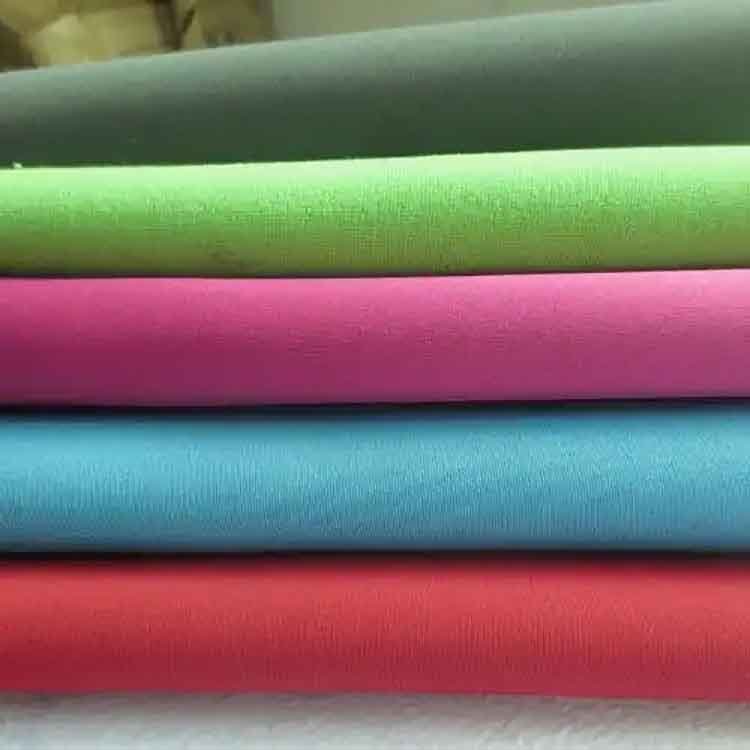
Premium neoprene grades with ≥75% chloroprene content and shore hardness of 50–60A deliver 30–40 N/mm tear strength per ASTM D624. Reinforced grades (with nylon or polyester mesh) can exceed 50 N/mm, ideal for heavy-duty covers and marine fenders. Standard grades (65–70% chloroprene, 40–50A) yield 15–25 N/mm—suitable for light-use items like drink sleeves but prone to faster wear under high stress.
Standard vs. Premium vs. Reinforced
| Grade Level | Chloroprene (%) | Shore Hardness | Tear Strength (N/mm) | Typical Applications |
|---|---|---|---|---|
| Standard | 65–70 | 40A–50A | 15–25 | Drink koozies, hobby crafts |
| Premium | 75–80 | 50A–60A | 30–40 | Wetsuits, custom neoprene bags |
| Fabric-Reinf. | 75–80 + mesh | 55A–65A | 40–55 | Industrial gaskets, marine fender covers |
- Standard Grades (65–70% chloroprene): These cost-effective materials suit low-stress products—drink sleeves, lightweight pouches, or craft projects. Their tear strength (15–25 N/mm) suffices when only occasional flexing occurs.
- Premium Grades (75–80% chloroprene): Elevated chloroprene yields tighter cross-links, boosting tear strength to 30–40 N/mm. Combined with moderate hardness (50–60A), these grades balance durability and flexibility, making them popular for wetsuits, laptop sleeves, and fashion bags.
- Fabric-Reinforced Neoprene: Laminated nylon or polyester meshes drastically enhance tear arrest. In industrial seals or marine fenders—where a tear could lead to catastrophic failure—the mesh absorbs stress, preventing small cuts from ripping open. Results: tear strengths above 50 N/mm and enhanced puncture resistance.
Cost vs. Performance Trade-Off
Upgrading from standard to premium neoprene typically adds 20–30% cost, and fabric reinforcement can add another 20–30%. Yet Szoneier’s integrated supply chain minimizes markups, offering premium grades at only a 10–15% premium over standard. Many clients find that reduced warranty claims and longer product life offset the small upfront increase—often within six months.
Industry Case Study: Marine Fenders
A European yacht supplier trialed three neoprene grades under cyclic bending and UV exposure: standard 45A, premium 55A, and fabric-reinforced 60A. The standard grade failed after 900 hours; premium lasted 2,500 hours; reinforced exceeded 4,500 hours. Although reinforced cost 30% more, its 5× lifespan made it the clear winner in total lifecycle cost.
Key Takeaway:
For any product subject to repeated stress—diving gear, industrial seals, heavy-duty covers—opt for premium or reinforced neoprene. The higher tear strength pays dividends in reliability and customer satisfaction.
How Are Durability and Tear Resistance Measured and Tested?
Durability and tear resistance are quantified by standardized tests: tear strength via ASTM D624, abrasion resistance via ASTM D3884, and compression set via ASTM D395. Environmental aging—UV (ISO 4892-2) and ozone (ASTM D1149)—predicts outdoor lifespan. These metrics (N/mm, mg loss, % deformation) provide actionable data to match neoprene grades to product requirements, ensuring you choose a material proven under controlled lab conditions.
- ASTM D624 – Tear Strength
- Procedure: A notched “Die C” specimen is pulled at 50 mm/min until tear propagation. Force (N) is recorded, then divided by sample thickness (mm) to yield N/mm.
- Significance: Higher N/mm indicates stronger resistance to crack growth. Premium Szoneier grades average 35 N/mm, while standard yield 20 N/mm.
- ASTM D3884 – Abrasion Resistance
- Procedure: A rotating cylindrical specimen abrades the neoprene against a standard medium under a 1 kg load for 1,000 cycles. Material loss in mg quantifies abrasion resistance.
- Application: Critical for items sliding over rough surfaces—tool bags or protective sleeves. Premium neoprene loses <50 mg; standard may exceed 120 mg.
- ASTM D395 – Compression Set
- Procedure: Samples compressed 25% at 70 °C for 22 hours, then released. Permanent deformation (%) measures how much thickness is lost.
- Impact: Low compression set (<10%) ensures gaskets and seals maintain thickness and sealing pressure over time.
- Environmental Aging
- ISO 4892-2 (Xenon Arc): Simulates full-spectrum sunlight exposure, assessing color change, embrittlement, and crack formation after 500–1,000 hours.
- ASTM D1149 (Ozone Resistance): Exposes samples under 50 pphm ozone at 40% elongation; crack formation indicates ozone degradation risk.
- Relevance: Outdoor gear, marine applications, and any product with UV exposure require these tests to predict real-world longevity.
- Quality Control Workflow At Szoneier, every lot undergoes incoming raw-material checks, in-process monitoring, and final QC testing. Test data—tear, hardness, compression set, and aging—are logged in batch certificates. Any deviation >±5% triggers rework or rejection, guaranteeing consistent performance.
- Comparative Lab Data Test Standard Grade Premium Grade Tear Strength (N/mm) 20 ± 2 35 ± 3 Abrasion Loss (mg) 120 ± 15 45 ± 8 Compression Set (%) 15 ± 2 8 ± 1 Xenon Arc Aging (h) 600 before cracks 1,200 before cracks
By aligning these metrics with your product’s stress profile, you eliminate guesswork—choosing neoprene with proven performance under standardized conditions.
Do Thickness and Density Correlate with Neoprene Strength?
Yes. Increased thickness and density both enhance tear resistance and durability. A 3 mm neoprene sheet requires ~50% more energy to propagate a tear than a 2 mm sheet. Densities above 1.2 g/cm³ correlate with tighter polymer networks and higher mechanical strength but may reduce flexibility. For heavy-duty covers or gear, a 4–5 mm, 1.25 g/cm³ grade offers ideal strength; for wearable items, 2–3 mm, 1.1–1.2 g/cm³ balances comfort and durability.
Thickness Effects
Tear propagation depends on the volume of material resisting crack growth. Laboratory tear-energy calculations show:
- 2 mm sheet: Baseline tear energy.
- 3 mm sheet: ~1.5× tear energy vs. 2 mm.
- 4 mm sheet: ~2× tear energy vs. 2 mm.
Thicker neoprene inherently withstands higher loads before failure. However, increased thickness can compromise flexibility—vital in wearable applications like gloves or fashion bags. A 2 mm grade offers finger dexterity; 3 mm suits general apparel; >4 mm is best reserved for industrial or marine covers.
Density Considerations
Neoprene densities range 0.9–1.3 g/cm³. Lower densities (<1.1) result from foaming agents, creating air pockets for insulation but weaker mechanical properties. High densities (>1.2) have less void content, yielding tighter polymer networks and superior tensile, tear, and abrasion performance.
| Thickness (mm) | Density (g/cm³) | Tear Strength (N/mm) | Flexibility ★★★★★ |
|---|---|---|---|
| 2.0 | 1.10 | 18 | ★★★★★ |
| 3.0 | 1.20 | 28 | ★★★★☆ |
| 4.0 | 1.25 | 35 | ★★★☆☆ |
| 5.0 | 1.30 | 42 | ★★☆☆☆ |
Flexibility is rated relative to 2 mm baseline.
Application Matching
- Light-Duty Products: 2 mm, 1.10 g/cm³—drink koozies, slim phone sleeves.
- Mid-Duty Products: 3 mm, 1.20 g/cm³—custom neoprene bags, mid-weight gloves.
- Heavy-Duty Products: 4–5 mm, ≥1.25 g/cm³—marine fender covers, industrial seals.
Real-World Insight
A tactical gear manufacturer compared 2 mm vs. 3 mm neoprene in abrasion rigs. The 3 mm grade outlasted by 10× the cycle count before visible wear. Although costing 12% more per square meter, the heavier grade reduced field failures by 90%, delivering net savings in returns and replacements.
Is Chloroprene Content a Key Factor in Tear Resistance?
Absolutely. Chloroprene content determines cross-link density; premium neoprene with 75–80% chloroprene offers 15–25% higher tear strength compared to standard grades (65–70%). Higher chloroprene percentages create more uniform, stronger polymer networks, directly translating to improved tear and tensile properties. For products facing dynamic stresses—gloves, tool holsters, active-wear—opt for ≥75% chloroprene content to minimize rip and crack failures.
Polymer Chemistry & Cross-Link Density
Chloroprene monomers polymerize into networks cross-linked during vulcanization. Each C–Cl bond facilitates more robust link points than C–H bonds in other rubbers. As chloroprene percentage rises, average molecular weight between cross-links decreases, boosting mechanical strength.
| Grade Type | Chloroprene (%) | Tear Strength (N/mm) | Relative Durability |
|---|---|---|---|
| Standard | 65 | 20 | 1.0 |
| Mid-Grade | 70 | 25 | 1.3 |
| Premium | 80 | 35 | 1.8 |
Cost Implications
Increasing chloroprene from 65% to 75% typically raises raw-material costs by 10–15%. Szoneier’s strategic supply-chain integration reduces that premium to 5–8%, making high-performance neoprene more accessible to mid-sized brands and startups.
Regulatory & Environmental Notes
Higher chloroprene content can slightly elevate volatile organic compound (VOC) emissions during curing. To comply with EU REACH and U.S. EPA standards, Szoneier utilizes low-VOC accelerators and closed-loop emission controls. All neoprene grades meet RoHS criterion—free of hazardous phthalates and heavy metals—enabling use in medical and food-contact products.
Buyer Guidance
When tear failures carry high costs—equipment downtime, recalls, or safety hazards—specify ≥75% chloroprene. For low-stress applications where budget is paramount, standard grades deliver acceptable performance.
What Industry Standards Govern Neoprene Quality Assurance?
Key specifications include ASTM D2000 (rubber product classification), ASTM D624 (tear strength), ASTM D395 (compression set), ASTM D3884 (abrasion), ISO 4892-2 (weathering), and ASTM D1149 (ozone resistance). Compliance ensures consistent mechanical, environmental, and safety performance. Many customers request certificates of compliance and batch test reports before signing off on material approvals.
ASTM D2000 Classification
This system uses letter-number codes to denote material properties (e.g., “CR 740 A 15”). The code details hardness, tensile strength, elongation, and maximum service temperature. Standardizing material ordering, it streamlines global sourcing and ensures your supplier’s neoprene meets agreed criteria.
ASTM D624, D395, D3884
As discussed, these tests quantify tear strength, compression set, and abrasion. They form the backbone of mechanical performance metrics, enabling apples-to-apples comparisons across suppliers and grades.
ISO 4892-2 – Xenon Arc Weathering
Simulates full-spectrum sunlight exposure (UV, visible, IR) to predict color fade, surface embrittlement, and cracking. Results after 500–1,000 hours inform outdoor product lifespans.
ASTM D1149 – Ozone Resistance
Exposes stretched samples to ozone at defined concentrations. Crack formation under 20 pphm ozone signals vulnerability; no cracks at 100 pphm indicates excellent ozone stability—critical for exposed seals and outdoor gear.
Regulatory Compliance
- EU REACH: Limits SVHCs (Substances of Very High Concern). Szoneier neoprene is REACH-compliant, free of carcinogenic accelerators and restricted phthalates.
- RoHS: Ensures no heavy metals or banned flame retardants, qualifying neoprene for electronics and medical applications.
Third-Party Audits & Traceability
High-value customers often require SGS or Bureau Veritas audits. We provide full documentation: MSDS, batch test certificates, process flow diagrams, and on-site inspection access. Each shipment includes traceable lot numbers, enabling rapid recall or investigation if ever needed.
Why Standards Matter
Adhering to recognized standards reduces risk, speeds product approvals, and builds confidence among OEMs, regulators, and end users. Don’t let “gray-market” neoprene compromise your brand.
How to Select the Optimal Neoprene Grade for Your Application?

Define your product’s mechanical loads, environmental exposures, and user-comfort priorities, then match them to neoprene’s tear strength, compression set, UV resistance, thickness, chloroprene content, and reinforcement. Use a weighted decision matrix, request free samples for in-house testing, and verify supplier batch data. Early collaboration with your manufacturer ensures the right balance of performance, cost, and timeline—avoiding costly redesigns or product failures down the line.
- Identify Key Performance Criteria
- Mechanical Loads: Weight, flex cycles, impact forces.
- Environmental Exposure: UV, saltwater, chemicals, temperature swings.
- Comfort & Aesthetics: Flexibility, hand feel, colorfastness.
- Decision Matrix Example Criterion Weight (%) 2 mm Std Grade 3 mm Premium 4 mm Reinforced Tear Strength 30 20 N/mm 30 N/mm 40 N/mm Flexibility 25 ★★★★★ ★★★★☆ ★★★☆☆ UV & Weathering 20 Moderate High Very High Cost Efficiency 25 Low Medium Higher Score each option to identify the best compromise of performance and budget.
- Sample & Prototype Testing Even the best lab data can’t predict every use case. Request 3–5 material swatches and small prototypes. Conduct tear, flex, and environmental tests in your facilities. Our Szoneier team ships samples within 7 days—free of charge.
- Total Cost of Ownership Consider unit price, replacement frequency, warranty claims, and downtime costs. A 15% higher initial material cost often pays for itself in reduced returns and enhanced customer satisfaction.
- Collaborate Early Involve your neoprene supplier during design. Discuss volume forecasts, color and texture requirements, surface finishes, and any special treatments. Early technical alignment prevents surprises during mass production.
- Real-World Example A medical device company needed neoprene sleeve covers with tight compression and UV stability. Through collaborative prototyping, they selected a 3 mm, 78% chloroprene grade with silicone coating. The final product passed 2,000 UV hours without cracking and maintained <8% compression set, meeting stringent FDA criteria.
Are There Coatings or Treatments to Enhance Neoprene Durability?
Yes—coatings like polyurethane (PU), silicone, fluoropolymers, and emerging nanocoatings can elevate abrasion and chemical resistance. PU adds a flexible, abrasion-resistant skin; silicone boosts UV and ozone stability; fluoropolymers repel oils and solvents; plasma or nanoparticle layers offer antimicrobial and extreme-durability properties. These treatments can enhance tear resistance by 10–30% while preserving base flexibility.
- Polyurethane (PU) Coatings
- Benefits: Adds an abrasion-resistant outer layer, improving durability against rough surfaces. Enhances hand feel for consumer products.
- Performance Gains: +15% tear strength, +50% abrasion resistance.
- Applications: Neoprene pouches, phone sleeves, tool holsters.
- Silicone Finishes
- UV/Ozone Protection: Silicone forms a UV-stable barrier, greatly extending service life outdoors.
- Comfort: Delivers a smooth, soft finish preferred in medical or wearable products.
- Cost Impact: Adds 10–15% to material cost but can double outdoor lifespan.
- Fluoropolymer Treatments
- Chemical Resistance: Repels oils, greases, and solvents—ideal for industrial covers or workwear.
- Easy-Clean Surface: Dirt and fluids bead off.
- Use Case: Automotive seals, machinery covers.
- Nanocoatings & Plasma Technology
- Emerging Solutions: Plasma sprays or nanoparticle infusions bond ultra-thin layers of ceramics or metals, yielding exceptional tear and microbial resistance.
- Performance: +30% tear strength, antimicrobial surface.
- Considerations: Higher cost, specialized equipment, ideal for medical and high-value applications.
- Post-Treatment Testing Coated neoprene must be retested for tear strength (ASTM D624), flexibility (ASTM D2240 hardness), and coating adhesion. Szoneier runs full QC on treated materials, ensuring coatings do not crack or delaminate over time.
- Cost-Benefit Analysis Treatments typically add 10–30% to material cost, but extended lifespan (30–50% longer) and improved performance often deliver rapid ROI—especially in high-usage or safety-critical products.
Conclusion
Durability and tear resistance are the cornerstones of any successful neoprene product—impacting performance, reputation, and profitability. By understanding how formulation, thickness, chloroprene content, testing standards, and surface treatments interplay, you can confidently specify the ideal neoprene grade for your next custom project.
At Szoneier, we leverage 18+ years of R&D expertise, state-of-the-art testing facilities, and flexible OEM/ODM capabilities to deliver tailored neoprene solutions. From initial sample prototyping to large-scale production, our team ensures consistent quality, rapid turnaround, and competitive pricing.
Partner with Szoneier to create neoprene products that stand the test of time—and stress. Let’s build reliability into every seam, layer, and finish.

